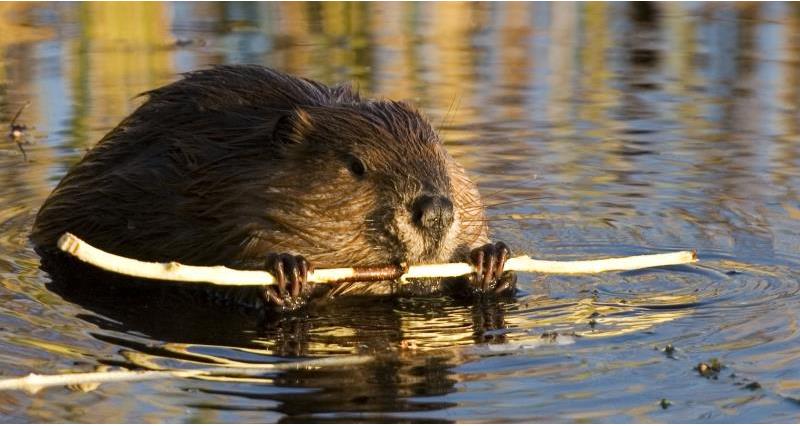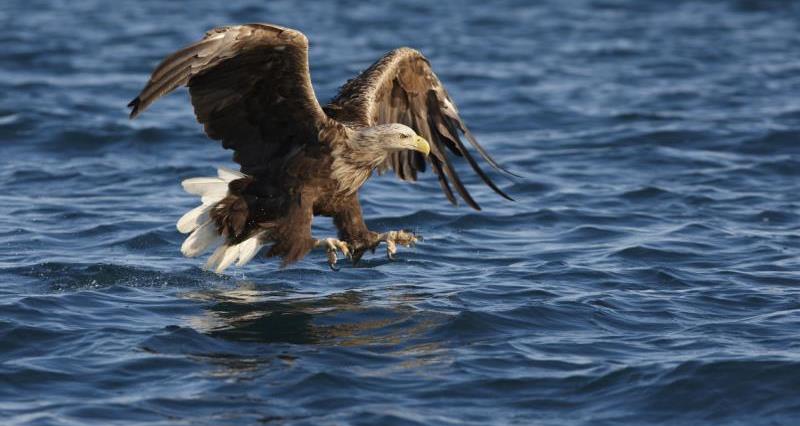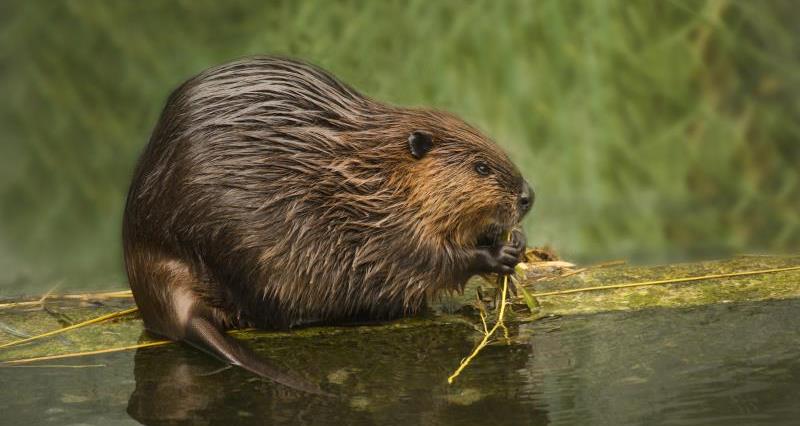What is a species reintroduction?
A species reintroduction is the return of a plant, animal, or fungi to an area from which it has been lost.
Reintroduction aims to re-establish a new viable population of the species within its natural range. Its main purpose is to improve the conservation status of that species, and/or restoring the areas of natural habitat, including its ecosystem functions and processes.
A species reintroduction is one of most common types of conservation translocations – the deliberate movement of a species from one site to another where the primary objective is a conservation benefit.
Some reintroductions may be beneficial, but they can also present a risk of causing adverse environmental, economic, and social impacts.
Farmers may be concerned about the potential impact of a reintroduction on their business and on food production.
Government guidance and code on species reintroductions
The Reintroductions and other conservation translocation: code and guidance for England is the main and overarching government guidance on species reintroductions.
It provides advice on what steps those planning a reintroduction could take to maximise the success and minimise the negative outcomes of a reintroduction.
The code outlines 9 key principles for a reintroduction project, which are summarised below:
- Principle 1 - identify the conservation need for a species and ecosystem, and set goals
- Principle 2 - evaluate whether species reintroduction or another type of
- conservation translocation is an acceptable option
- Principle 3 - if a conservation translocation is an acceptable option, develop a plan
- Principle 4 - get legal permissions and licences, consent from landowners and follow safety and welfare good practice
- Principle 5 - maximise chances of successful establishment
- Principle 6 - maximise biodiversity benefits and minimise the risks of harm to biodiversity
- Principle 7 - consider societal benefits and minimise conflict with others
- Principle 8 - show accountability, transparency, and openness
- Principle 9 - record conservation translocations and monitor, evaluate and communicate outcomes
Key NFU asks for government policy on species reintroductions
The NFU consulted with members to submit written and oral evidence into the EFRA Committee inquiry into species reintroductions.
As part of the EFRA inquiry, the NFU outlined several species reintroductions policy asks of government. See: Our policy asks.
The subsequent EFRA inquiry report recognised many of the concerns and recommendations made by the NFU, many of which government will not be taking forward currently.
Species reintroductions were ‘not a priority’ for the previous government – this was outlined in its response to the enquiry below. The current government is taking a more proactive approach, recently announcing that further wild releases of beavers will be licensed as part of a carefully planned reintroduction programme.
The NFU continues to engage and lobby government for action on these asks. This has already resulted in some changes and improvements in the government’s approach.
In July 2024, the government strengthened the species reintroduction code and guidance to ensure partners are engaged with the development of species reintroduction exit strategies.
Further reading:
- 28 February 2024: Wild release of beavers permitted without agreed long-term management plan
- 31 October 2023: Species reintroduction ‘not a priority’ at this time, says Defra
- 27 October 2023: Species reintroduction inquiry – government publishes response
Our policy asks
The NFU is calling on the government to:
- provide clarity on its approach to species reintroductions in England,
- undertake a social, economic, and environmental impact assessment prior to a species being reintroduced to England.
Where a species reintroduction has potential to impact on farm businesses and food production, the government must:
- take stronger action in addressing illegal species reintroductions;
- strengthen the consultation, project management, and exit strategy requirements in the reintroduction code and guidance requirements;
- consult on its approach to these species and, where needed, develop species-specific strategies that outline the longer-term vision for that species; and
- enable farmers and landowners to have access to funding and management options to mitigate and manage any potential impacts, which should be provided by the reintroduction project.
Species reintroduction projects – five key asks
Individual species reintroduction project proposals have and will come forward at a local level.
This could be a proposal to reintroduce a butterfly, an orchid or a white-tailed eagle to a certain area.
It is important that each reintroduction project proposal is reviewed based on its own merit.
However, when a species presents a high risk of causing wider negative impacts on the countryside, farm businesses, and food production a national approach and policy must be in place for that species (see section on government asks).
To help reduce the conflicts that local species reintroduction project proposals could create, the NFU has produced five key policy asks of projects to help prevent negative impacts which are outlined below. These could be used when engaging with projects.
- Project proposals must adhere to the code of reintroductions and conservation translocations in England
- Project proposals must be based on sound scientific research including feasibility studies and impact assessments
Both assessments must consider the short, medium, and longer-term requirements, risks and impacts of the project.The project should access and demonstrate the social, economic, and environmental impacts (positive and negative) of that species reintroduction including how it could affect farming and food production, other species, and infrastructure.
The assessments must further consider what future species management may be required and what impact this could have on landowners and managers. - Project proposals must include early engagement and objective consultation with stakeholders who could be impacted in the short, medium, and longer term
The government should provide project proposers with a suggested list of stakeholders to consult with in each area/catchment.The species reintroduction project consultation should cover what happens at the end of the project, and what future management may be required. Following the consultation, the proposal must be properly balanced against the concerns of stakeholders.
If the proposal and subsequent licence application demonstrates an impact on agriculture and concerns from farmers, the NFU would like to see the licensing body conduct further consultation with those stakeholders prior to granting any licence. - Project proposals must have clear, balanced, and open communication to informing stakeholders about the project
It is important that this communication presents a balanced view of the project and its impacts to ensure that those responding to the consultation can respond objectively.
Communication about the future management of that species beyond the project should come from the government, not the project proposer.
- Project proposals must detail the project management and funding structures
The species reintroduction project proposer is responsible for the management of that species including all costs involved ahead and during the licensing period. Farmers and land managers must not be expected to bear the burden of risk, management, and cost of the reintroduction.
The project proposer must have a clear well-resourced management plan and exit strategy in place ahead of receiving a full licence and should provide readily available support.
Species reintroduction news

Species-specific guidance
Beavers
Legal status
Following various reintroductions there are enclosed and wild beaver populations living in England. These beavers are legally protected under the Wildlife and Countryside Act 1981.
For many years, there has only been one legal population of beavers which is on the River Otter in Devon. There are other wild populations of beavers established through escapes from enclosures and illegal release.
On 28 February 2025, the government announced that further wild releases of beavers will be licensed as part of a carefully planned reintroduction programme.
Following this announcement, Natural England received 39 expressions of interest from projects looking to release beavers into the wild. So far, eight of these projects have been invited to start the process of submitting a full licence application; part of this process should include local engagement and consultation with farmers.
For further information about Defra’s approach to the wild release and management of beavers in England and an explanation of the protection, management and licensing of beavers in England, visit: Eurasian beavers – legal status, management and licencing
This legal protection follows a national consultation into beaver reintroduction and management. The NFU response can be found at: Beavers given legal protection without clear management plan

Habitat, diet, behaviour and the landscape
Beavers are freshwater semi-aquatic rodents. They prefer deep, slow-moving water for shelter and can engineer waterbodies through the creation of dams to provide this. Beavers can be found in lakes, rivers and headwater streams.
The diet of beavers changes throughout the year. During the summer they will forage on tender vegetation – this can include crops. During the winter, beavers feed predominantly on the bark of trees.
Beavers can fell small clusters of trees as well as larger trees to provide the resources required for building a dam. Not all the felled trees may be used in dam construction and could be left at a fell site.
Dams can have impacts on the landscape and will slow and hold back water. This “slowing the flow” could helps mitigate downstream flooding.
However, it can cause a local raising of the water table and waterlogging of the soil. Beavers will dig channels to manage the flow of water in and around a dam. In high flow events, some dams may breach or even collapse releasing water.
Burrows are commonly associated with dams, and are dug into banks of waterbodies by beavers for shelter. They can extend 20 meters inwards.
Often entrances to burrows and lodges will be underwater and not clearly visible, this means land managers may not know if there are burrows on their land.
There is a risk that burrows may collapse, livestock and machinery can sometimes trigger this posing a potential health and safety risk.
Beavers and disease
As part of the licensing regime beavers will undergo health and disease screening before being translocated or reintroduced to an enclosure as part of a reintroduction programme.
However, post release monitoring of diseases may vary depending on the programme’s resources and feasibility of monitoring individuals.
Natural England has identified that the health status of wild beaver populations will most likely be monitored through the recovery and post-mortem of dead individuals.
Bovine TB has never been detected in beavers, but as almost any mammal can become infected, there is a very small disease risk.
Imported beavers that have not been thoroughly health screened may be at risk of introducing disease not established in the UK. This includes diseases that could have impacts on human health, such as the fox tapeworm, as well as diseases that affect livestock. Beavers for reintroduction projects are therefore normally sourced from Scotland.
Help and support
If you’re being impacted by beavers, you can get in contact with your local beaver management group and/or Natural England for help and support. A list of the groups can be found at: Beaver Management | Groups
Beaver policy asks
As part of the NFU’s written and oral evidence to the EFRA inquiry on species introductions, the NFU developed several key policy asks of government on all species, these are summarised above.
In addition to these, the evidence included beaver specific asks which have been developed in consultation with members. These have been updated as policy develops and are summarised below.
The NFU continues to lobby government for action on these asks.
- The government must produce and consult farmers on its long-term vision and management approach for beavers in England.
- The management approach to beavers should ensure that the right policy and management options are in place to minimise the negative impacts of beavers in the short, medium, and longer term.
- Those impacted by beavers including farmers and land managers must have access to sufficient support and funding to prevent and deal with negative impacts.
- The current approach to illegal releases of beavers needs to be backed up with stronger action by government.
White-tailed sea eagles
Legal status
The white-tailed sea eagle was first successfully reintroduced in Scotland in 1975, and there have been several attempts to reintroduce them in England. These birds are legally protected under the Wildlife and Conservation Act 1981.
In 2019, Natural England granted a licence to release around 60 birds on the Isle of Wight as part of reintroduction project led by the Forestry Commission and the Roy Dennis Wildlife Foundation.
In England, further projects in Cumbria and Exmoor are exploring licenses to release these birds.
In Wales, the Eagle Reintroduction Wales project is looking into the feasibility of bringing the sea eagle back to southeast Wales and the Severn Estuary.
Habitat, diet, behaviour and the landscape
Juvenile white-tailed sea eagles can roam 200km beyond their nest site and when settled, the eagle’s hunting territory can be up to 70km2.
This means that people and businesses outside of the consultation areas may be affected by their activities. It highlights why it is so important to consult outside of the release areas and, if needed, nationally.
Sea eagles predominantly prey on fish, small mammals and birds, and they have been known to take lambs. The full impact of sea eagles may not be seen until they begin to breed as hunting pressures increase with rearing chicks, often breeding after reaching five years of age.
This means a short-term management period required by a licence may not sufficiently support the long-term management of sea eagles.
Pine martens
Legal status
Pine martens are protected under the Wildlife and Conservation Act 1981. This means that it is illegal to intentionally kill or injure pine martens.
They were once common and widespread across the UK. While there are populations in Scotland, the presence of pine martens in England and Wales is now scarce.
Though scare in numbers, there have been attempts to reintroduce the species in places such as the Forest of Dean where there is now a breeding population.
The Two Moors Pine Marten Project is planning to release between 30-40 pine martins in Exmoor and Dartmoor.
Habitat, diet, behaviour and the landscape
Typically preferring woodland habitats with mature trees in order to raise their young, they feed on voles, mice, birds and squirrels but will also forage for eggs and berries and will scavenge carrion.
Potential conflicts with pine martens may arise if predation on poultry units and game farms occurs.
While free range birds may be at greater risk, pine martens are agile and may gain access to domestic poultry houses near woodland habitats.
Poultry units can undertake prevention actions to stop or minimise any risk. It is not believed pine martens are a direct threat towards livestock due to their size, however more research is needed to better understand any potential disease risks including from bovine tuberculosis (currently seen as negligible by Defra, APHA and Natural England).
Eurasian lynx
Legal status
The Eurasian lynx is a medium-sized wild cat.
There are several established populations in Switzerland, Germany, and Slovenia. It is a European Protected Species.
Evidence suggests that the species was historically present in the UK. There is currently no wild population, it would be illegal to release lynx into the wild.
Habitat, diet, behaviour and the landscape
Lynx favour forests and woodlands. They are most active at dawn and dusk.
Their diet is varied as adaptable predators; they predominately feed on deer and small mammals.
They have been known to attack livestock such as sheep and goats, particularly when grazing near the edges of woodlands. This presents a serious risk to livestock businesses.
The Missing Lynx Project is currently exploring the feasibility of reintroducing lynx to North East England and the bordering areas of southern Scotland. Part of this process involves engaging and consulting with the farming community.
If you are being impacted by a species reintroduction, get in contact with your local NFU office or call NFU CallFirst on 0370 845 8458.





